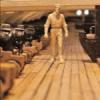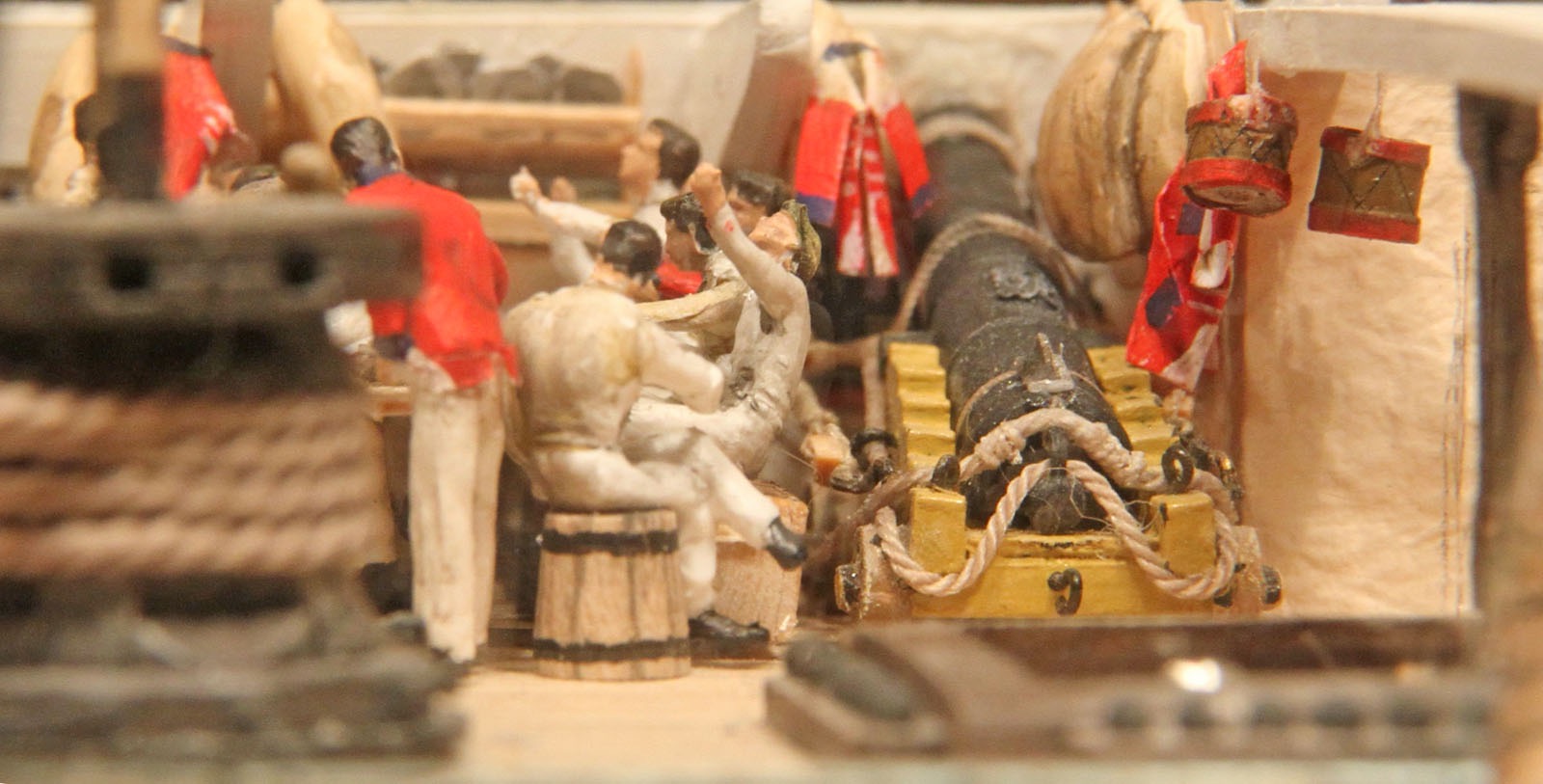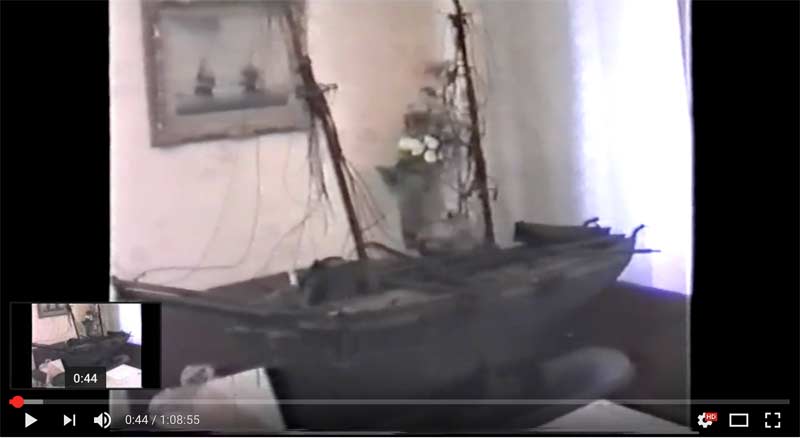-
Posts
2,417 -
Joined
-
Last visited
Content Type
Profiles
Forums
Gallery
Events
Everything posted by dafi
-
Worked, thank you!!! XXXDAn
-
Thank you, but sorry, still no luck ... ERROR: There is no document with the provided identification number. XXXDAn
-
Thank you for the documents! Unfortunately it looks like the link is wrong: Source: McHenry, James. 1797. “Uniformity of Dress on Ships of War.” http://wardepartment...nt.php?id=22778 It redirects onto this page ... XXXDAn
-

New and need help to identify a mystery model? Read here first!
dafi replied to ccoyle's topic in New member Introductions
But sometimes one get´s a real gem. Here is incredible Willi Meischl on the restoration of a "dustpan"-finding, narrowly escaping it´s fate. It proved to be a historical model of a Austrian trading brig from the 1870ies. See the video of the restoration. Excuse the quality, it is from a VHS from 1988-1989 and we were lucky to still be able to transfer it :-) So better check twice :-) XXXDAn Allow some off topic: Also enjoy Willi´s build of the model of the arctic explorer vessel "Admiral Tegetthoff", displayed in the technical museum in Vienna. https://de.wikipedia.org/wiki/Admiral_Tegetthoff_(Schiff) There is also a nice film from the ORF (official Austrian TV) that shows him building a 1:1 Model for a film of the expedition. Unfortunately not on Youtube as for Copyrights :-( XXXDAn -
To put the rule to the test, or - in other words - here comes the big rag, part 1. To get the overlap right this time I constructed a small light table: 2 logs, some glas and a lamp. Above light from underneath, below light from the top. To get things straight I printed the pattern onto a paper and glued it face down onto the glas with a minimum spray glue. As I also sprayed the back of the paper, the silk is nicely fixed and does not move while working. Do not face the print towards the silk, or the heat will transfer the laser toner onto the tissue - unless it is wanted :-) The silk I used for the gaff was is pongée 8 as this sail was a more heavy cloth. Constructed a small cutting machine for the panels ... ... and started bravely ironing. First side went rather fast, then flipped over, adjusted to the grid and restarted and went immediately tilted ... ... but was no problem to scratch that off :-) Here the result in changing ambient light conditions, just what I wanted to see, every time it looks different :-) The overlap is still to broad, that was a mistake of mine. To make the overlap more visible, I still added a 1 mm stripe atop, see the spaghetti in the back of the picture. It was surprisingly easy to do and exact in the outcome. Then the slightly curved reef bands and the other doublings ... ... and step one was done. The size of the sail can be seen as soon as my little ship yard worker is added. And just for fun: The original out of the box :-) :-) :-) So next steps will be great fun: Adding the bolt ropes and the glue-paint mixture and waiting if everything stays as crisp as it is now! XXXDAn
-
Hello Andi :-) The last engraving with Victory showing the old fashioned entry port - as depicted in Slade´s drafts - is 1779 Victory, „Sailing by the White Cliffs of Dover“. In 1780 she had a refit also and was coppered for the first time - and since that day the port vanished from all sources until it reappeared in 1828 after another repair. But by then, the port was one more opening further in the back. Since then it was to be seen in all sources until it was moved to todays position in the 1920/30ies. The disappearing side entry port is nothing specific to the Vic, it started to disappear from all first and second rates around 1760, the time of the Seven Years' War and the War of Independence - high times on the seas and plenty of trouble with the french. A coincidence? The ports just started to reappear around 1803/1805. XXXDAn
-
First the most important question: What ship/era/nationality are we talking about :-) It is he most common during the later times - as druxey and others point out - that the sides are vertical and bottom and top follow the line of the deck. This allows the frames - which were build vertically - not to be weakened by cut outs and also gives the same height level towards the deck and also allows the spriketting to pass uncut underneath the ports. This applies for carvel build with frame first and vertical frames. Now the "it depends": Older ships build hull first - like Vasa or contemporary dutch builds - where the frames were afterwards applied into the hull and were not vertical, pointing towards the ship´s middle on the top, thus resulting in tilted squared ports like #D. XXXDAn
-

THE 74-GUN SHIP by Jeronimo
dafi replied to Jeronimo's topic in - Build logs for subjects built 1751 - 1800
As usual - a dream :-) XXXDAn- 194 replies
-
That is what I meant earlier: Apparently the copper tells, what the ship did last :-) In our german forum there is a nice collection of pictures all of different shades in colo of the copperr. There is a nice article in German from Peter Prystaz of Swiss minisail that could explain: http://minisail.ch/de/werkkunde/kupfern.pdf "5. Patina: (rough translation) As there are almost no more sea going coppered ships on regular trips, one started to imagining the appearance more than knowing it. Mostly it is displayed blank or green, which is wrong. If a ship is sea going the copper becomes pink. Yes, pink! The pinkish color is coming of the abrasion of the water molecules, the green only comes on the air. New copper is of shiny brownish color. If in drydock like the Cutty, it gets darker. If the ship is in saltwater but not moved it gets green [as seen on the Constitution]. If the ship was in harbour for longer, first the waterline gets pink the bottom last. So the color of the copper can accentuate the story of the model." One more remark: There are some very nice pictures of recent copperings with highly glossy plates. I do think, this does not translate into the old days, as todays copper for sure has some kind of surface treating. Original copper plates that arrived in the shipyard for sure did not have this and also had enough time to "season". [That also applies for the wood: It usually had enough time to season while being build, so there where never those like "fresh" cut wood looking ships ;-) ] That lead to some trials on the color - all 1:100, the nails still a bit strong as those were the first tests. Copper not too old, the bottom brown from lying in port, pink on the waterline and green above ... ... sailing the brown getting less andgetting pinkish ... ... and the brown gone and mostely pink. Here the last two tests to compare. On the bottom there are always some blank copper plates as reference :-) Cheers, Daniel
-
WOW! Thanks to all that helped in this one!!! Sincerily, Daniel
- 19 replies
-
- Early Navy
- frigates
-
(and 2 more)
Tagged with:
-
Thank you very much! But unfortunately, most of the links do not work with me ? Was there a problem with copy-paste in the link or is it me? XXXDAn
- 6 replies
-
- Naval topics books
- Pre-copywright pubs
-
(and 1 more)
Tagged with:
-
Have a look here, a similar discussion: http://modelshipworld.com/index.php/topic/14942-the-best-copper-plates/ There is no fear to use nails in 1:100 if they are fine enough. Here is a picture of my Vic, the nails can be seen if close and disappear within half a meter distance - just as on the real thing. It is the self adhesive copper foil combined with some imprinted nails. A german friend used the foil for a larger scale with a self made stamp, the kind o that is often described in the literature. Also the color is not that easy :-) For sure the brilliant copper is not to be seen in reality, but the green color is mostly coming through the oxidation with oxygen, the area where "wind and weather meet" is pinkish by the abrasion of the water and the under water areas can have a nice deep brown. So if properly done, one should see, if the model is to represent a ship lying in harbour, being on a short trip or having a long voyage behind - only by the appearance of the copper :-) XXXDAn #1099 #1114
-

Plank bending for real
dafi replied to Srodbro's topic in Building, Framing, Planking and plating a ships hull and deck
That is all you need ... ... for planks sufficient long for that: XXXDan -
So I went on to search for different kind of papers and found something from the restoration department :-) Immediately had to try this out - and I never have been that near to what was being encapsulated in my strange brainsalads ... ... the back side was without any crisps ... ... and the transparency was perfect too ... ... and if I still manage to fit the doubling on the front and back sides to to match ... ... and I further on renounce to put two strips of "canvas" atop each other - as to be seen in strip n#6 -... ... yep, then ... ... ...hihihihihihihihi... That is why I immediately did the next test piece. And got the appearence even closer to my aim. The doubling is made a layer thicker as it consists in reality of 4 layers of cloth, not just two. Also I added some copper thread in the seam, even though it will possibly be a bit difficult in a larger sail. Then painted with some diluted wall paper glue dyed very carefully with a mixture of 3 parts light grey and one part yellow ochre :-) Here some shots of the nice play with light, changing appearance from frontal, side and back light Slowly we go :-) ... slowly ... XXXDAn
-
Ok, time to do some stupid things ... ... I! WANT! ... I! WANT! ... I! WANT! ... ... sails :-) For some time already - actually years - I was cogitating about how to do the sails. For scale reason I do not like the cloth ones as for their too coarse structure, paper ones almost always end up with small crisps and waves from painting. Silk is too transparent. Paper easily gets crisps and tears and rips if formed in a wet state. Cloth is too rigid for my scale to give a realistic fall of the folds, paper is ... Also I wanted to find something more realistic for the usual way of imitating the seams with pencil - or even worse black stitches. In reality the stitches themselves are mostely invisible as they have a similar color to the sail. What one can see is a difference in transparency as the area of the stitches consists of 4-time folded cloth, being almost invisible with light from the front and to be seen as a "shadow" of blocked light if it comes from behind. Could go on for ages lamenting. So I decided to laminate ... (Got the pun?) That is why I wanted to try a unusual test, combining both materials. Cloth with paper glued to both sides, thus giving the better paper structure but using the strength of the cloth within. By using wall paper glue, I aimed in being able to soften up the sail where needed by wetness or steam to be able to form the sail afterwards. One still is young and has dreams ... So on we went, trying out a series of small squares of 5 cm of different cloths and papers and surprisingly this crackpot idea really seemed to be not completely out of this world. So and even further we went, investing in a wedge frame, putting the Silk of pongé 5 - the thinnest I could get - onto it ... ... and evenly spreading the glue. Then ading the thinnest paper I had on both sides. And one sees immediately the problem, the paper gives: the waves and crisps. Got better after drying ... ... the transparency was perfect ... ... but the sidelight revealed the small crisps still being there. Next I tried to glue the seams onto this base which did not work at all, as the paper got soft with the glue ... ... ripping to shreds and proving its unwillingness not to perform straight lines :-(
-
See, that is why I like Plastic ;-) XXXDAn
- 19 replies
-
- separation
- wood movement
-
(and 1 more)
Tagged with:
-
Wasn´t that even a crack in the whale, not in the seam?!? XXXDAn
- 19 replies
-
- separation
- wood movement
-
(and 1 more)
Tagged with:
-
Yes properly done all the details fit together. The twice 7 turns (7 + 3.5 + 3.5) multiplied by the thickness of the drum and the drum´s diameter multiplied by the seven turns should give the helmway. At my Vic it fitted perfectly with the drum´s measures McKay gives :-) I just realised, it wasn´t mentioned yet here. Surprisingly the helmsmen can´t see the indicator - they usually were aware of the position with the help of the master spoke. The helm indicator was meant for the officers of the watch and the sail masters to see if the set sails and the helm correspond well or if the sail arrangement should be altered to ease the helm. XXXDan
-

Royal Louis by fmartins - multi-media
dafi replied to fmartins's topic in - Build logs for subjects built 1751 - 1800
Very interesting at this scale :-) XXXDAn -

"Gunnery notes" from William Rivers (*1755, †1817)
dafi replied to dafi's topic in Nautical/Naval History
That could very well be as in the book the picture caption describes that the "marines were hiding underneath white hammock cloth until they commenced firing" Thank you. XXXDAn -

"Gunnery notes" from William Rivers (*1755, †1817)
dafi replied to dafi's topic in Nautical/Naval History
These are the sketches so far that made me interested: A carriage from Victory showing unusual bolt arrangments List for the use of case shot both shown in Napoleonic Naval Armament 1792-1815 from Ospry His entry for the positions in the fleet on the way into the battle from Victory First Rate, Eastland & Ballantyne Also of interest are informations about Richard F. Roberts, midshipman on the Vic at Trafalgar, showing the setup of the hammocks. Do I read the first 1,5 lines correct? And what are the XXX? "The Victory had white hammock cloth spread loosely over the XXX and kept that (?) XXXX commenced (?) firing. XXXDAn -
As already mentioned in my build, I am looking for the sketch-/notebook from Mr. Rivers. He was gunner on the Vic from 1790 to 1812 and excerpts from this book have been already published in some literature. #911 #917 I am looking for this source out of the Royal Naval Museum: William Rivers (1755-1817), gunner on HMS Victory: gunnery notes (Acc 1998/41) Does anybody have any copies of that or know how to access it? XXXDAn
About us
Modelshipworld - Advancing Ship Modeling through Research
SSL Secured
Your security is important for us so this Website is SSL-Secured
NRG Mailing Address
Nautical Research Guild
237 South Lincoln Street
Westmont IL, 60559-1917
Model Ship World ® and the MSW logo are Registered Trademarks, and belong to the Nautical Research Guild (United States Patent and Trademark Office: No. 6,929,264 & No. 6,929,274, registered Dec. 20, 2022)
Helpful Links
About the NRG
If you enjoy building ship models that are historically accurate as well as beautiful, then The Nautical Research Guild (NRG) is just right for you.
The Guild is a non-profit educational organization whose mission is to “Advance Ship Modeling Through Research”. We provide support to our members in their efforts to raise the quality of their model ships.
The Nautical Research Guild has published our world-renowned quarterly magazine, The Nautical Research Journal, since 1955. The pages of the Journal are full of articles by accomplished ship modelers who show you how they create those exquisite details on their models, and by maritime historians who show you the correct details to build. The Journal is available in both print and digital editions. Go to the NRG web site (www.thenrg.org) to download a complimentary digital copy of the Journal. The NRG also publishes plan sets, books and compilations of back issues of the Journal and the former Ships in Scale and Model Ship Builder magazines.



